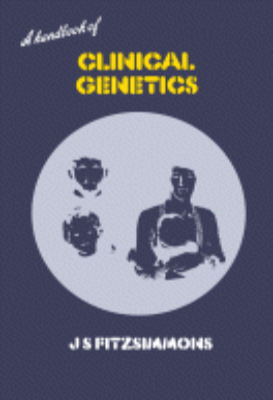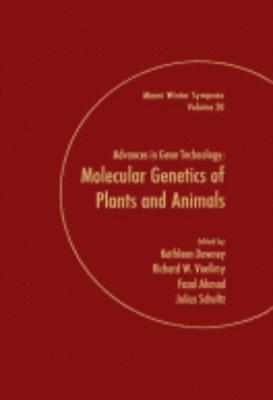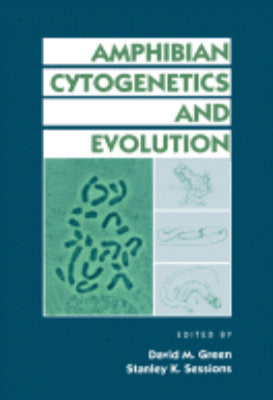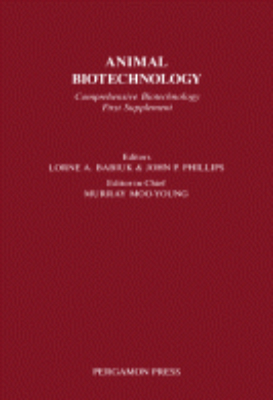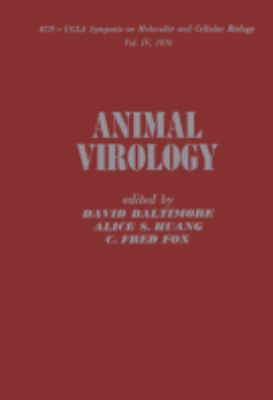Life Science
A Handbook of Clinical Genetics
A Handbook of Clinical Genetics focuses on clinical genetics and the growing demand for genetic counseling. This book begins by introducing issues regarding changes in morbidity and mortality; fall in birth rate; advances in technology and treatment; and complex social changes. Other topics covered include genetic and environmental factors in disease; the genetic code; pedigree information; inheritance patterns; genetic counseling; prenatal diagnosis of genetic disease; special problems; and ethical issues and future developments. The last portion of this text is devoted to a glossary of unfamiliar medical terms, list of recommended books for further research and study, and appendices consist of a case on genetic counseling for Down's syndrome. This handbook is suitable for nurses, medical students, and doctors needing an introduction to clinical genetics.
Advances in Animal and Comparative Physiology
Advances in Physiological Sciences, Volume 20: Advances in Animal and Comparative Physiology covers the proceedings of the symposia of the 28th International Congress of Physiology. The book discusses several studies that tackle issues about the advances in animal and comparative study. The text is comprised of 61 chapters in which Chapter 4 and the succeeding chapters are grouped into eight parts based on the topic of the studies. The opening chapter explains sensory modalities beyond human perception, while Chapter 2 discusses trends in the physiology of domesticated animals. Chapter 3 reviews muscles in living animals, which is followed by topics grouped into parts. The first part deals with fetal homeostasis, while the second part discusses control of corpora lutea function of ruminant and non-ruminant domesticated animals. The third part deals with the comparative physiology of lactation in farm animals, while the fourth part tackles digestion in non-ruminant herbivorous animals. Parts 5 and 6 cover topic on diving, which includes metabolism, physiology, and control. The seventh part discusses phylogenesis of hormones and hormone receptors, and the last part covers neuromuscular transmission in invertebrates. Researchers whose line of work concerns the physiological properties of animals will find this book as a great source of related literatures.
Advances in Gene Technology: Molecular Genetics of Plants and Animals
Advances in Gene Technology: Molecular Genetics of Plants and Animals contains the proceedings of the Miami Winter Symposium held in January 1983 in Miami, Florida. The papers explore advances in the molecular genetics of plants and animals and cover a wide range of topics such as genetic manipulation of plants; plant cell cultures, regeneration, and somatic cell fusion; and nitrogen fixation. Practical applications of gene technology with plants are also discussed. Comprised of 84 chapters, this volume begins with an overview of how plants manufacture from carbon dioxide and water all of their substances, paying particular attention to the path of carbon in photosynthesis. The organization of the plant genome is then considered, along with techniques for cell culture, regeneration, and somatic cell fusion; vector systems; and nitrogen fixation. Some chapters focus on gene transfer by protoplast fusion; somatic cell genetic systems in corn; regulation of transcription of the nitrogen fixation operons; and leghemoglobin and nodulin genes of soybean. The final section is devoted to practical applications of gene technology to plants and to technology frontiers in animal biology, in particular embryonic development and vaccines and diagnostic methods for animal diseases. This book should be of value to molecular geneticists.
Advances in Physiology Biochemistry and Function
The Testis: Advances in Physiology, Biochemistry, and Function, Volume IV, provides an overview of the state of knowledge in the physiology, biochemistry, and function of the testis. This volume updates those areas of greatest research activity and introduces in a more complete manner those topics which have developed as subject areas in themselves. It includes a chapter on testicular steroidogenesis, which updates and expands the chapter appearing in Volume II. In addition, chapters on the role of FSH in the testis, the specialized (largely endocrine) functions of the Sertoli cells, and the entire account of the tubular hormone inhibin have all been extensions of material in the original chapter on testicular endocrinology. Similarly, separate chapters on blood flow in the testis, fluid secretion, and the blood-testis barrier all report data on subjects largely unsuspected when Volumes I-III were published. Neither the first three volumes nor is the present one intended primarily for the nonprofessional biologist or the popular reader. The coverage should be most useful and informative to professional biologists. It is anticipated that this volume will also be of interest to advanced students of animal biology as an authoritative, comprehensive, and convenient review of significant recent information concerning the testis.
Amino Acids Proteins and Cancer Biochemistry
Amino Acids, Proteins, and Cancer Biochemistry focuses on the contributions of Jesse P. Greenstein to biological chemistry, including kinetics, protein mixtures, metabolism, tumors, and biosynthesis. The selection first offers information on quantitative nutritional and in vivo metabolic studies with water-soluble, chemically defined diets and internal hydrogen bonding in ribonuclease. Discussions focus on the effects of deuterium on transition temperature, kinetics of deuterium-hydrogen exchange, applications of chemically denned diets, formulation of water-soluble, chemically defined diets, and large-scale preparation of optically pure amino acids. The manuscript then examines the chromatographic evaluation of protein mixtures and observations on the activation of amino acids and biosynthesis of peptide bonds, including synthesis of phenylacetylglutamine and benzoylglycine, studies on amino acyl adenylates, and synthesis of glutamine. The publication ponders on free amino acids and related substances in normal and neoplastic tissues; nucleic acids of normal tissues and tumors; and carbohydrate metabolism in ascites tumor and HeLa cells. Topics include carbohydrate metabolism of ascites tumor cells, comparative biochemistry of glycolysis, DNA and the genetic concept of cancer, and constancy of free amino acid patterns of tissues. The selection is a valuable source of data for biochemists and researchers interested in amino acids, proteins, and cancer biochemistry.
Amphibian Cytogenetics and Evolution-key feature
This book appears at a time when molecular cytogenetics is positioned to make a significant impact upon evolutionary studies, enabling problems of chromosomal structure and change to be critically assessed. It is an up-to-date and comprehensive survey of the cytogenetics of a major class of animals, including all three amphibian orders, with chapters authored by international leaders in the field.Amphibian Cytogenetics and Evolution will be of interest to classical and molecular cytogeneticists, systematicists, evolutionary biologists, herpetologists, and anyone using amphibians in genetic research.
An Introduction to Biochemistry
An Introduction to Biochemistry, Second Edition provides information pertinent to the fundamental aspects of biochemistry. This book presents several analytical methods, including the citrulline reaction for proteins and the diffusion test for acetone. Organized into two parts encompassing 25 chapters, this edition begins with an overview of the general composition of the organism and the chemical characteristics of the chief organic and inorganic compounds that enter into its structure. This text then examines the chemical composition of the tissues and physiological systems. Other chapters consider the occurrence and identification of several pathological constituents of urine, which presents features of biochemical interest. This book discusses as well the significance and analytical reactions of the bile acids and esters. The final chapter deals with the internal environment, which in the higher animal is represented by the blood and the cerebrospinal and other tissue fluids. This book is a valuable resource for biochemists.
Animal Biotechnology: 1989
The advent of biotechnology has the potential to develop a variety of novel or better quality products for the treatment of a large number of diseases in livestock. In addition, as we understand more about the reproductive physiology of animals, the potential exists to dramatically increase the productivity of animals through better therapeutics and diagnostics for the control of many infectious diseases. Productivity can also be increased through animal breeding strategies including gene transfer, micromanipulation of embryos and gamete sex selection. As well as being a valuable reference to current knowledge in these areas, this first supplement toComprehensive Biotechnologyalso looks at societal concerns over the use of antibiotics and chemical residues in meat and milk products, which are forcing biotechnologists to investigate more natural means of controlling infection by stimulating the animal's own immune system to combat infection. The identification of a variety of cytokines which are involved in regulating immune responses provides opportunities to use the animal's natural defence mechanisms to combat many infections or increase the animal's resistance to such infections. These approaches should provide tools for eventual elimination of specific diseases from counties, regions or whole continents.
Animal Biotechnology: 2014
"Animal Biotechnology introduces applications of animal biotechnology and implications for human health and welfare. It begins with an introduction to animal cell cultures and genome sequencing analysis and provides readers with a review of available cell and molecular tools. Topics here include the use of transgenic animal models, tissue engineering, nanobiotechnology, and proteomics. The book then delivers in-depth examples of applications in human health and prospects for the future, including cytogenetics and molecular genetics, xenografts, and treatment of HIV and cancers. All this is complemented by a discussion of the ethical and safety considerations in the field.Animal biotechnology is a broad field encompassing the polarities of fundamental and applied research, including molecular modeling, gene manipulation, development of diagnostics and vaccines, and manipulation of tissue. Given the tools that are currently available and the translational potential for these studies, animal biotechnology has become one of the most essential subjects for those studying life sciences. Key Features. Highlights the latest biomedical applications of genetically modified and cloned animals with a focus on cancer and infectious diseases. Provides firsthand accounts of the use of biotechnology tools, including molecular markers, stem cells, and tissue engineering"
Animal Cell Bioreactors
Animal Cell Bioreactors provides an introduction to the underlying principles and strategies in the in vitro cell culture biotechnology. It addresses engineering aspects such as mass transfer, instrumentation, and control ensuring successful design and operation of animal cell bioreactors. The goal is to provide a comprehensive analysis and review in the advancement of the bioreactor systems for large-scale animal cell cultures. The book is organized into four parts. Part I traces the historical development of animal cell biotechnology. It presents examples of work in progress that seeks to make animal cell biotechnology processes as productive on a cost per unit of product basis as that achieved by other microbial systems. Part II includes chapters dealing with the implications of cell biology in animal cell biotechnology; protein-bound oligosaccharides and their structures; the development of serum-free media and its use in the production of biologically active substances; and the metabolism of mammalian cells. Part III focuses on animal cell cultivation, covering topics such as the fixed bed immobilized culture; three-dimensional microcarriers; and hydrodynamic phenomena in microcarrier cultures. Part IV discusses the design, operation, and control of animal cell bioreactors.
Animal Cell Biotechnology
There has been a dramatic increase in the perception of the value of animal cell biotechnology to the research and manufacturing communities in recent years. This volume seeks to keep the reader up-to-date with this progress. This sixth and final volume in the series concentrates on the biology of animal cells in culture, giving special attention to the relationship between biology and the ability to use such cells productively. As the search continues for greater productivity, there is a need to understand the switches within cells that control expression. Additional abilities to manipulate those switches in a controllable manner are also required. In the last five years, considerable progress has been made in the elucidation of the mechanisms for cell signaling and control of gene expression. The 13 chapters of this volume are devoted to these subjects and to techniques in areas of particular concern in manufacturing circles. The achievements in the field to date are described in this book, which, together with its five companion volumes in the series, will provide a building block for the future development of animal cell biotechnology.
Animal Cell Technology; 1994
Animal Cell Technology: Products of Today, Prospects for Tomorrow is a collection of papers that discusses the advancement and future of biotechnology. The book presents a total of 164 materials that are organized into 22 sections. The coverage of the text includes the various methodologies involved in animal cell technology, such as post translational modifications; kinetics and modeling; and measurement and assay. The book also covers product safety and consistency testing; products from animal cells in culture; and apoptosis and cell biology. The text will be of great use to biologists, biotechnicians, and biological engineers. Readers who have an interest in the advancement of biotechnology will also benefit from the book.
Animal Cell Technology: 1992
Animal Cell Technology: Developments, Processes and Products is a compilation of scientific papers presented at the 11th European Society for Animal Cell Technology (ESACT) Meeting, held in Brighton, United Kingdom. The book is a collection of various works of scientists, engineers, and other specialists from Europe and other parts of the world who are working with animal cells. The books aim is to communicate experiences and research findings on the development of cell systems. The research papers are grouped into 25 sections encompassing 145 chapters. Subjects covered range from cells and physiology engineering dealing with cell characterization, cell culture establishment, cloning, and cell engineering. Topics on culture media, ammonium detoxification, the effects of physical parameters on cell cultures, assays and monitoring systems, and bioreactor techniques are also covered. Discussions are likewise made on the products from animal cells in culture, virus removal, and DNA determination and characterization in relation to safety issues. The book will be useful for cell biologists, molecular biologists, biochemists, biochemical engineers, and students engaged in the study of animal cell cultures.
Animal Virology
Animal Virology consists of papers presented in a meeting which considered broad issues and advances in animal virology and tumor viruses. This book is divided into nine parts, representing the nine sessions of the meeting. Five of the nine sections deal particularly with viruses known to be oncogenic in animals, and one of these covers explicitly human oncornaviruses. The other four sections describe the processes common to all viruses: replication, protein synthesis, and persistence, wherein emphasis is given to negative strand viruses and plant viruses.
Animal Virus Genetics
Animal Virus Genetics is a collection of scientific presentations of the ICN-UCLA Symposia on Molecular and Cellular Biology, held at the University of California, Los Angeles in 1980. The papers in the compendium focus on the basic genetic model systems; the uses of genetic approaches to study basic problems in molecular biology; and on the increasing application of genetic systems to the study of more complex viral-host interactions such as viral virulence and persistence. Microbiologists, cellular biologists, and virologists will find the book insightful.
Animals and Environmental Fitness: Physiological and Biochemical Aspects of Adaptation and Ecology: Volume 1 1980
Animals and Environmental Fitness, Volume 1: Invited Lectures is a collection of papers that tackles ecological concerns. The materials of the book are organized according the main issue of their contents. The text first tackles the chemical factors of the environment, such as water and oxygen availability, ecomones, and pollutants. The other half of the book encompasses the physical factors of the environment that include light, pressure, and temperature. The text will be of great use to scientists who study the interaction between flora, fauna, and the total environment.
Animals and Environmental Fitness: Physiological and Biochemical Aspects of Adaptation and Ecology: Volume 2 1980
Animals and Environmental Fitness: Physiological and Biochemical Aspects of Adaptation and Ecology, Volume 2 contains the proceedings of the First Conference of the European Society for Comparative Physiology and Biochemistry held in Lige, Belgium, on August 27-31, 1979. The papers explore the physiology and biochemistry of animal adaptation and ecology and cover topics ranging from amino acid transport and metabolism during osmotic shock to the role of organic compounds in osmoregulation in plants and animals. This volume is comprised of 89 chapters and begins with an analysis of the transport and metabolism of amino acids under osmotic stress, followed by a discussion on cell volume regulation in isolated heart ventricles from the flounder, Platichthys flesus, perfused with anisosmotic media. Subsequent chapters focus on the effects of cholinergic drugs on the osmotic fragility of erythrocytes; strategies of osmoregulation in the fiddler crab Uca pugilator; ionic regulation in the African catfish Clarias mossambicus in water and air; and environmental and endocrine factors controlling osmotic water fluxes in gills of Sarotherodon (tilapia) mossambicus. The effect of seawater adaptation on the phosphatidyl-choline metabolism in the eel is also considered, along with evaporative water loss in anuran amphibians. This book will be of value to zoologists, physiologists, biologists, and biochemists.
Antimetabolites in Biochemistry Biology and Medicine
FEBS: Federation of European Biochemical Societies, Volume 57: Antimetabolites in Biochemistry, Biology, and Medicine is a collection of papers that presents that advancement in the field of antimetabolites research. The title first covers the use of antimetabolites in enzymology, and then proceeds to tackling the consequences of analog incorporation into nucleic acids. Next, the selection discusses the rational approach to the use of antimetabolite in commination cancer chemotherapy an in immunosuppression. The text also covers the aspects of selective antiviral action. In the last part, the selection details various compounds, along with their synthesis and mechanisms of action. The book will be of great use to researchers and practitioners of biochemistry, biology, and medicine.
Applied Biochemistry and Bioengineering
Applied Biochemistry and Bioengineering, Volume 2: Enzyme Technology discusses the industrial applications of immobilized enzymes. Organized into 10 chapters, this volume first describes the techniques for the isolation and purification of intracellular and extracellular enzymes for use on an industrial scale. It then deals with immobilized enzyme processes, with an emphasis on immobilized glucose isomerase and the amylolytic enzymes related to the production of high-fructose syrups from starch. Significant topics on immobilized enzyme technology for future uses in energy transduction and in pharmaceutical modifications of steroid compounds are also explored. Microbiologists, geneticists, and chemical engineers will find this book of great value.
Applied Plant Genomics and Biotechnology
"Applied plant genomics and biotechnology reviews the recent advancements in the post-genomic era, discussing how different varieties respond to abiotic and biotic stresses, investigating epigenetic modifications and epigenetic memory through analysis of DNA methylation states, applicative uses of RNA silencing and RNA interference in plant physiology and in experimental transgenics, and plants modified to produce high-value pharmaceutical proteins. The book provides an overview of research advances in application of RNA silencing and RNA interference, through Virus-based transient gene expression systems, Virus induced gene complementation (VIGC), Virus induced gene silencing (Sir VIGS, Mr VIGS) Virus-based microRNA silencing (VbMS) and Virus-based RNA mobility assays (VRMA); RNA based vaccines and expression of virus proteins or RNA, and virus-like particles in plants, the potential of virus vaccines and therapeutics, and exploring plants as factories for useful products and pharmaceuticals are topics wholly deepened. The book reviews and discuss Plant Functional Genomic studies discussing the technologies supporting the genetic improvement of plants and the production of plant varieties more resistant to biotic and abiotic stresses. Several important crops are analysed providing a glimpse on the most up-to-date methods and topics of investigation. The book presents a review on current state of GMO, the cisgenesis-derived plants and novel plant products devoid of transgene elements, discuss their regulation and the production of desired traits such as resistance to viruses and disease also in fruit trees and wood trees with long vegetative periods. Several chapters cover aspects of plant physiology related to plant improvement: cytokinin metabolism and hormone signaling pathways are discussed in barley; PARP-domain proteins involved in Stress-Induced Morphogenetic Response, regulation of NAD signaling and ROS dependent synthesis of anthocyanins. Apple allergen isoforms and the various content in different varieties are discussed and approaches to reduce their presence. Euphorbiaceae, castor bean, cassava and Jathropa are discussed at genomic structure, their diseases and viruses, and methods of transformation. Rice genomics and agricultural traits are discussed, and biotechnology for engineering and improve rice varieties. Mango topics are presented with an overview of molecular methods for variety differentiation, and aspects of fruit improvement by traditional and biotechnology methods. Oilseed rape is presented, discussing the genetic diversity, quality traits, genetic maps, genomic selection and comparative genomics for improvement of varieties. Tomato studies are presented, with an overview on the knowledge of the regulatory networks involved in flowering, methods applied to study the tomato genome-wide DNA methylation, its regulation by small RNAs, microRNA-dependent control of transcription factors expression, the development and ripening processes in tomato, genomic studies and fruit modelling to establish fleshy fruit traits of interest; the gene reprogramming during fruit ripening, and the ethylene dependent and independent DNA methylation changes. Key Features. provides an overview on the ongoing projects and activities in the field of applied biotechnology. includes examples of different crops and applications to be exploited. reviews and discusses Plant Functional Genomic studies and the future developments in the field. explores the new technologies supporting the genetic improvement of plants"

